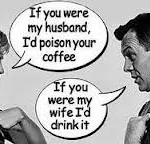Today as I revise, I’m going to count my modifiers. Really. I’m going to be mindful of that old “Less is more” adage that is so true. In describing, acting out and giving emotions to your story, what good are modifiers and how should you treat them?
Writing Tip for Today: Everyone, it seems has a pet peeve, but I’m talking more about using your words effectively to give the reader a complete experience. I don’t say “never” about using any modifier. Here’s what I do:
- No Draft Editing. I never police my modifiers when I draft. To do so gets those inner editors scrambling out of their hiding places. I want to imagine the story unfolding in my head like a movie–no editors allowed.
- Make Modifiers Work. Upon revision, however, my modifiers must pull their weight. The poor adverbs are the first ones I scrutinize. “Lys” are common culprits of weak or inactive verbs. That said, consider the voice of your character. If the character says “really” then you probably should write it and keep it.
- Look for Patterns. Do you see a lot of double modifiers in your work? The tall, dark stranger, the beautiful old house (admittedly these examples are lame). I often see patterns of modifiers in students’ work and try to avoid these over-modifying habits. That said, it’s much easier to axe a modifier than it is to find the most particular noun or verb.
- Be Particular. Yep, a strong active verb or a concrete sensory detail (CSD) can make all the difference. If you scan your work, circle all the generic verbs such as look, walk, move, put, placed. Ask yourself how the character moved, placed, looked, etc. Replace with specific active verbs.
- A Little Dab Will Do Ya. In modifiers, metaphors and similes, the best advice is to use as sparingly as you would truffle juice or saffron in cooking.. The heavier the descriptions, the less of an impact each will make. Use your best in a spot in the story where it really counts. Because, yes, LESS IS MORE.




